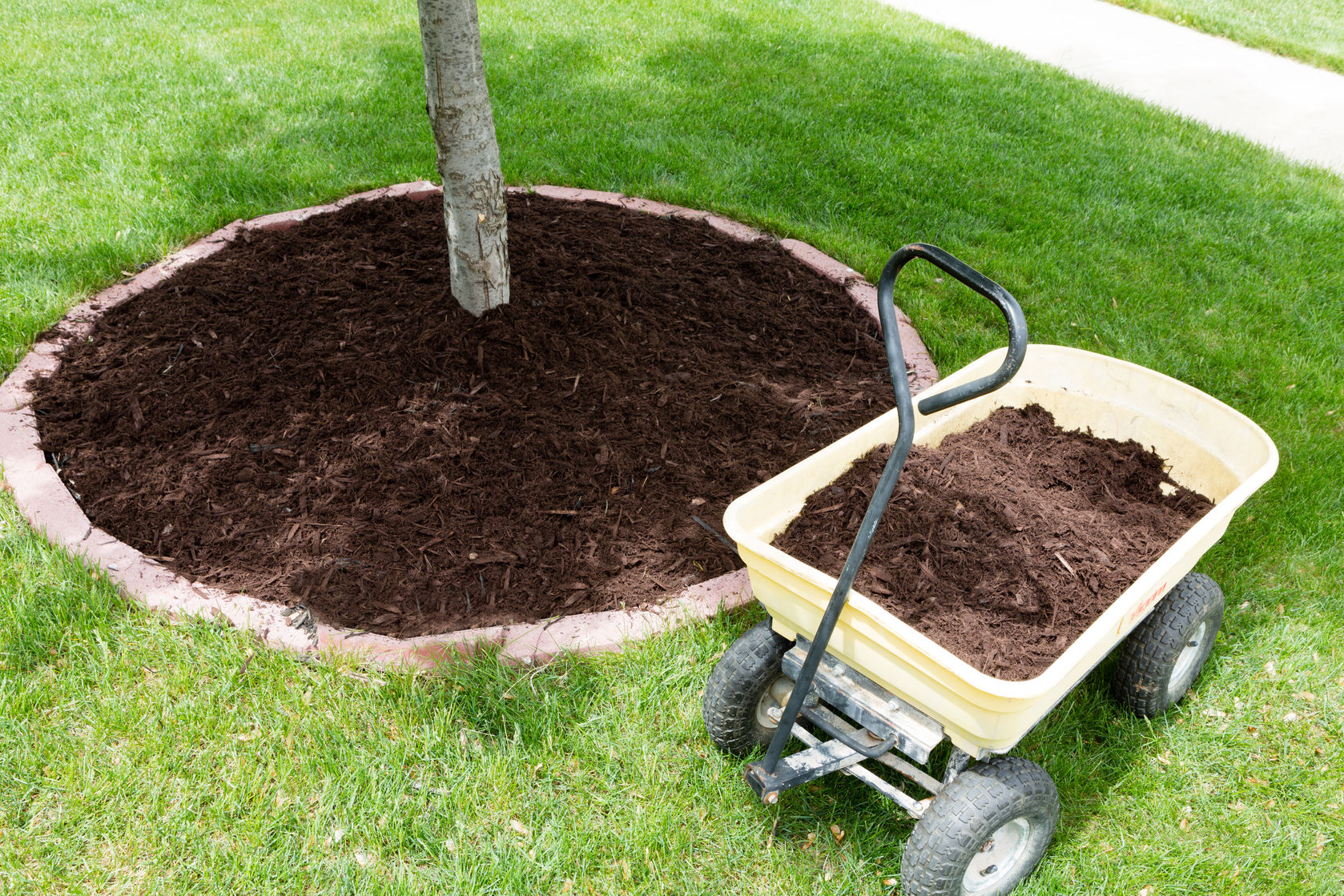
Keep Your Trees Healthy this Fall with this Simple Tip
Tree owners often feel compelled to spray, prune or apply something to their trees and landscape plants on a regular basis. But, unless there is a specific reason, the best thing to do to keep your trees healthy is apply a layer of composted mulch.
“Fall is a great time to be out in the yard spreading shovels full of composted wood-chip mulch under your trees,” says Tchukki Andersen, staff arborist with the Tree Care Industry Association (TCIA). “Trees with mulched root zones are usually larger, more vigorous, develop faster and have higher rates of survival than plants surrounded by turf grass or bare dirt. Mulches retain soil moisture and reduce erosion and soil compaction.”
Mulched trees also have fewer weeds, which reduces the need for the roots to compete for limited resources. The soil under the mulch also likely stays warmer longer into the winter and also warms faster in the spring, helping extend the growing season for plants. Organic mulches are a favorite among professional arborists. Other organic mulches include bark chips, ground bark, composted lawn clippings, leaves and straw. These mulches are high in cellulose and low in nitrogen, and should be free of weed seeds.
How Wide is Wide?
A good mulch bed should extend out at least three feet from a tree’s trunk in all directions, though extending out to the dripline is preferred. This is where the fine, absorbing tree roots extend out into the soil. Keep organic mulches several inches away from the base of the tree to avoid rot and diseases.
How Deep is Deep?
The mulch bed depth should be maintained at 2 to 4 inches. If there is grass in the area that needs to be mulched, put a five-page layer of newspaper over the grass, get it wet, then add mulch on top. This will help keep the grass from growing up through the mulch. For poor soils, use well-composted mulch to build up the nutrients. Soils that are healthy will do fine with a highly stable softwood bark (such as cypress bark), which doesn’t break down as easily.
The biggest no-no when mulching is to create a “mulch volcano” that is piled high around the base of the tree. This practice traps moisture around the tree trunk and root flare leading to decay and, eventually, structural failure. Avoid fine mulch – thick blankets of fine mulch can become matted and prevent the penetration of water and air. Low oxygen levels (from packed-down mulch) creates a toxic “sour” mulch – which may give off pungent odors, and even worse, the compounds produced (methanol and acetic acid) can kill young plants.
While mulch does decompose, you do not want to accumulate excessive mulch year after year by adding fresh mulch every spring. If you want the look of fresh mulch, break up the old with a rake, and only add a layer of new on top if there is less than 4 inches in depth.
Source: TCIA
Connect with us: Facebook – Twitter – LinkedIn – YouTube – Pinterest – Google+ – HOUZZView Our Communities – View our available new home floor plans – View our photo gallery


Sorry, the comment form is closed at this time.